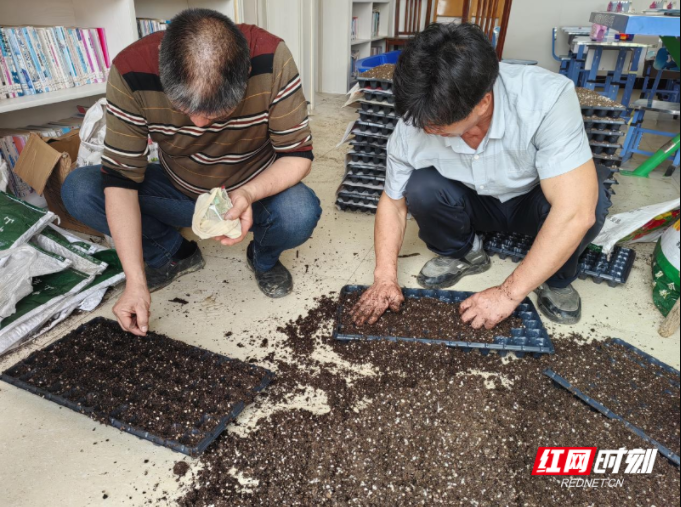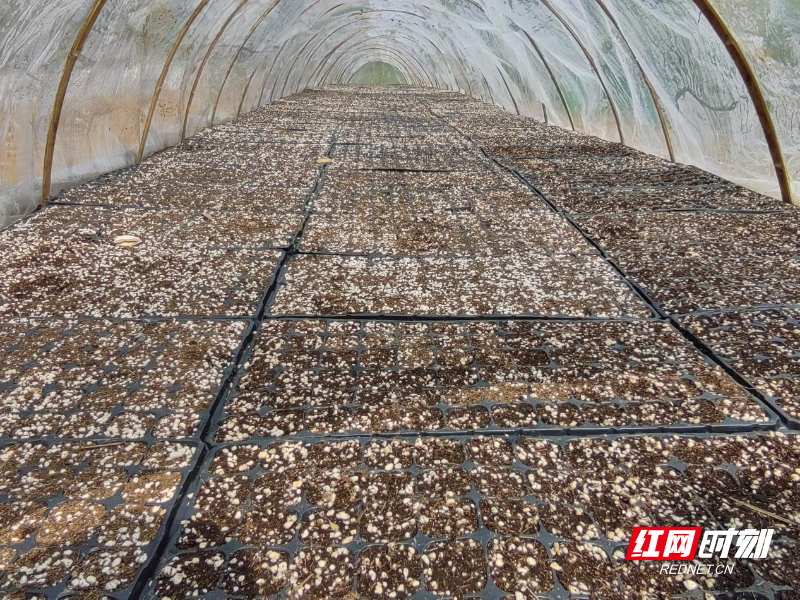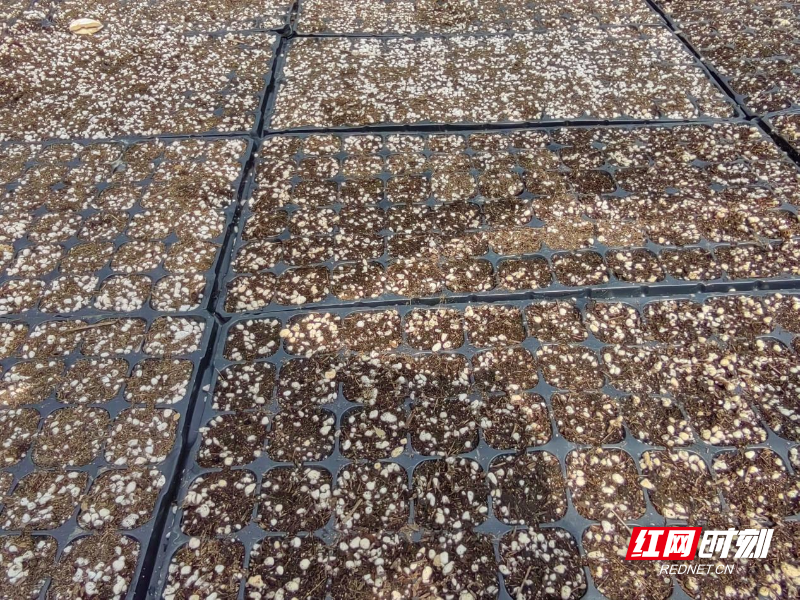Villagers busy cultivating chili seedlings in Xingning Town
2024-04-18
Recently, villagers were busy cultivating chili seedlings in Chatian Village, Xingning Town, Zixing City.

Agricultural technicians in Xingning Town along with village officials were engaged in sowing seeds in the fields.
Hundreds of seedling trays are placed neatly in the large arched shed.
In the memory of the people in Zixing, Beiji chili peppers are most famous. Due to the unique soil and suitable altitude, Beiji chili peppers have the characteristics of thick skin, large size, good taste, and excellent quality.
As one of the main production areas of Beiji chili peppers, Chatian Village has fertile soil and superior natural conditions.

“Our village has an altitude of about 500 meters, with a large temperature difference between day and night. The chili peppers taste good and have good quality. Due to the cool weather, the cultivation and transplanting of chili seedlings are delayed, so they can be sold off peak. About 2,500 kilograms of chili peppers can be produced per mu (about 0.067 hectares), with an output value of about 8,000 yuan. It is expected to increase the village collective economic income by 50,000 yuan this year, said Li Xiongxian, Party secretary of Chatian Village.
Chatian Village plans to plant 50 mu (about 3.33 hectares) of chili peppers in the farm, organize all villagers to plant 120 mu (8 hectares) of chili peppers, and invite agricultural technicians from Xingning Town to provide on-site technical guidance.
Meanwhile, the village, cooperating with enterprises, has developed contract agriculture to develop the brand “Beiji Chili Peppers”, helping the village collective and villagers to increase income.

“We have developed the characteristic chili industry through the influence of specialized villages to promote comprehensive rural revitalization and improve people’s happiness,” said Chen Bin, mayor of Xingning Town.
This year, chili peppers have been planted in Chatian Village, Zhuyuan Village, and Shilongtan Village, covering an area of 500 mu (about 33.33 hectares).
In recent years, Xingning Town has continued efforts to optimize the planting structure based on local conditions and build a large-scale, standardized, and demonstrative vegetable town through united planning, variety, and technical specifications to fatten villagers’ wallets.




